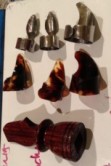Happy April, Sparks readers! This week, I am bringing to you the essentials of buying and owning a đàn tranh, which is a plucked zither of Vietnam.
If you’ve watched the dramas (based in the ancient time periods) of China, Japan and/or Korea, then you’ve probably seen its distant cousins. They are the guzheng, koto, and geomungo, respectively.
If you have a few pointers for people who are looking to buy any of these instruments, please feel free to share in the comment section below.
What is it?
The đàn tranh originally had 16 strings, but in the 1950s Master Nguyễn Vĩnh Bảo increased it to 17 strings. Today instruments with 17 strings are more prominent. I personally own a 17-string đàn tranh and have shared below a picture depicting the instrument.

Where do I get one?
Where you live in the United States may determine the cost and difficulty of finding one. In the U.S., seven of the 10 cities with the greatest Vietnamese populations are in California, so finding an instrument and an instructor is not difficult.
The cost of an instrument is $300-$450 for an average one, and a professional instrument ranges from $600 to $1,200. My source is my đàn tranh instructor, who moved from San Jose, Calif., several years ago but still has family over on the west coast.
Currently on eBay, a professional instrument sells for about $400 (free shipping from California), which is not an easy buy when you are a college student on a budget. You’re probably thinking: The one on eBay is from California but is cheaper than actually buying one in the state. You’re right. However, I would ask someone who knows more about these instruments to see if this $400 product is worth its price tag.
Luckily for me, about a year and a half ago, my grandmother was taking a trip to Vietnam. In Saigon, there are streets filled with vendors and professionals of various instruments.
You can find people who make the instruments by hand or who own machine manufactured ones. My grandmother purchased my instrument for $50, and it cost $35-$45 to ship from Vietnam to the U.S. (You can’t carry it on the plane unless you’re willing to pay for the extra seat.)
Please keep in mind that my instructor considers my instrument to be average. There are high-quality đàn tranhs that cost thousands of dollars in Vietnam, but if you are a novice or aren’t sure of your commitment to practicing, this is probably not the best route.
What do I need to play?
The instrument can be played with all five fingers on your right hand, but traditional songs used only three. For traditional songs, three pieces are worn on the thumb, index and middle fingers of the right hand.
They can be made of various materials, including plastic and wood. The left hand is in charge of pressing down on the string over the bridge on the left, which adds flair to the song.
Two of several possibilities are vibrato and pitch bending. To tune the instrument, which uses a pentatonic scale, you need a wooden piece (pictured) that fits over the plugs. The plugs hold the steel strings in place on the left side.
It is probably best to purchase extra strings, especially if you plan to buy a cheaper instrument. The strings tend to break more often on the average models. Within a year, six of my strings broke.
The strings are separated into three categories — 20, 25 and 30 — depending on the length of the string. From the pictures, you can see that the strings end further on the top left compared to the middle and the bottom of the instrument.
For buyers who want to go all out, the instrument is played on a stand, which costs about $35. The instrument is played with the right side elevated above the left.


